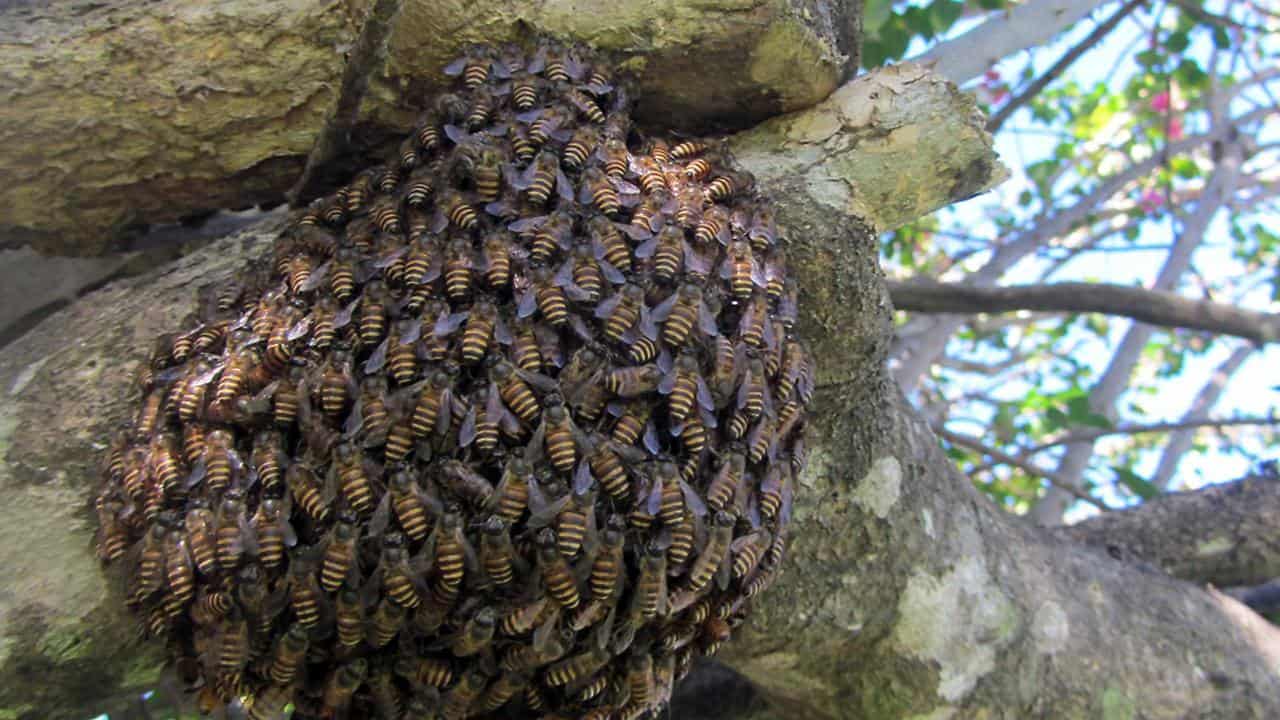
Thousands of colonies of invasive Asian honey bees infesting an area the size of Greater Sydney came from a single swarm, defying evolutionary expectations.
That's the finding of a team of researchers, who say the discovery is bad news for the honey industry and biosecurity officials but could be good news for threatened species.
Asian honey bees arrived in Australia in 2007 - likely from Papua New Guinea - and took hold in Queensland, where more than 10,000 colonies cover a 10,000 square kilometre area.
The massive population in the state's north has overcome a "genetic bottleneck", whereby gene pools are very limited - to thrive there.
That is despite the assumption high genetic diversity is important for populations to adapt, researchers said.
“Our study of this bee population shows that some species can quickly adjust to new environments despite starting with very low genetic diversity relative to their native-range populations," University of Sydney researcher and study co-lead author Ros Gloag said.
“While this might be bad news for environments coping with newly arrived invasive species, it’s potentially good news for populations that have temporary crashes in the face of climate change or other natural or human-induced disasters, such as bushfires.”
Researchers were able to analyse the invasive Asian honey bees in samples collected by the Queensland Department of Agriculture and Fisheries, which tried unsuccessfully to eradicate the species.
Authorities were initially afraid the bees carried varroa mite - which have since arrived in Australia, threatening the honey industry - but they did not.
“Although that (eradication) attempt was unsuccessful, the biological material collected has been incredibly valuable for understanding how these invasions proceed," Dr Gloag said.
"That in turn helps us prepare better for future invasions."
Scientists at the CSIRO, Canada's York University, and Indonesia's IPB University and Bandung Institute of Technology were also involved in the research.
It was published in the journal Current Biology.









